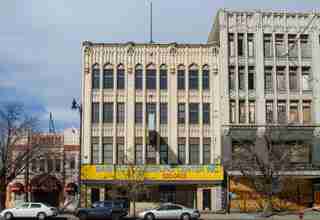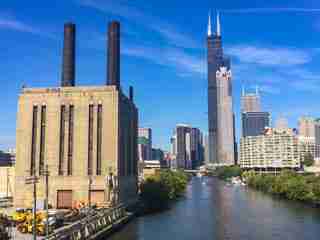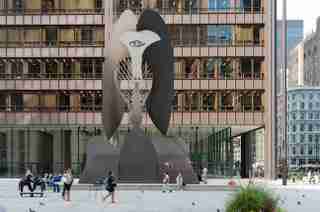The 7 Most Endangered Buildings in Chicago
It is said that Chicago is the city where contemporary American architecture was refined, but despite its design pedigree, many of the city’s lesser-known architectural feats end up at risk of demolition. Every year Preservation Chicago —an organization that advocates for the city’s economic and cultural growth by championing Chicago’s built environment—releases a list of structures that are most likely to be torn down in the coming year because of a lack of economic investment, the privatization of public spaces, and other contributing factors. Its hope is to highlight the city’s forgotten architectural and engineering sites—and perhaps inspire their redevelopment and reuse. Below are the seven most endangered buildings in Chicago in 2017.

Madison-Pulaski District
Once a “downtown” in its own right, the Madison-Pulaski District in Garfield Park is a cluster of architectural gems—ranging from Art Deco to Gothic—that was the West Side’s go-to for shopping, food, and entertainment in the early 20th century. Since the district's decline in the 1950s, many buildings in the area have been left in disuse, and even the historic Hotel Guyon built in 1927 has been threatened with demolition. Preservation Chicago recommends that the area be deemed a Chicago Landmark District.

Chicago Union Station Power House
The iconic Art Moderne façade and towering smokestacks of the Chicago Union Station Power House are symbolic of Chicago’s growth as a transportation hub in the 1850s. It has been out of use since 2011 and is currently being considered for demolition.

Chicago’s 20th Century Public Sculptures
With over 100 sculptures, paintings, and mosaics to be found downtown, Chicago has seen some of the 20th century’s most exciting collaborations between artists and architects, from Pablo Picasso’s The Picasso (pictured) in Jacques Brownson’s Daley Center to Alexander Calder’s Fla-mingo paired with the Mies van der Rohe’s Federal Center. According to Preservation Chicago, the threat of removal, relocation, and destruction of many pieces of public artwork has been prevalent as of late.
Cornell Store & Flats
The former City of Chicago cultural historian Tim Samuelson considers the Cornell Store & Flats one of the city’s most significant buildings—yet it goes widely unrecognized and continues to deteriorate because of a lack of economic investment in the South Side. It is a rare example of a commercial building designed by one of the city’s famous Prairie School architects, Walter Burley Griffin.
Chicago Water Cribs
Designed in 1865 by engineer Ellis F. Chesbrough to bring fresh water to the city, the Water Cribs have become iconic offshore structures. While two are still in use, the city has plans to demolish the two oldest cribs. Preservation Chicago encourages their refurbishment and reuse.
Altgeld Gardens
Built between 1943 and 1945, this 157-acre public housing development is what Preservation Chicago considers a “testament to good public housing design ideals.” Many of the homes have since been remodeled and are still being used as public housing, but 15 buildings have already been demolished, with another 25 expected in the coming years.
Jackson Park & South Shore Cultural Center Park
Although there are plenty of high-profile projects under way at Jackson Park—like the Barack Obama Presidential Center and Project 120’s installation of a Yoko Ono sculpture titled Sky Landing —Preservation Chicago is concerned that these new developments aren’t considering preservation initiatives throughout the park and aren’t asking for the community’s input as much as they should.